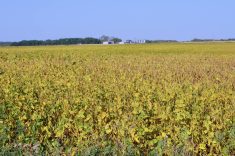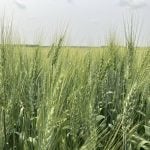As the calendar turned over to April, the focus for traders on the Chicago Board of Trade turned toward weather.
There can be a tendency to either react based on recent weather events, ignore potential long-term weather trends, or both. In the case of wheat, the recent weakness shown in all three major U.S. varieties does not truly represent their current circumstances.
The May Chicago wheat contract lost 10.25 US cents per bushel to US$6.82 during the week ended April 5. Meanwhile, the May Kansas City hard red winter wheat contract dropped 10 cents to $8.615/bu. and the May Minneapolis spring wheat contract eased off 6.25 cents to settle at $8.735/bu.
Read Also

Maizex Seeds to launch hybrid canola varieties for Western Canada
Maizex Seeds, an eastern Canadian seed company, will break into Western Canada with two canola hybrid varieties starting this fall.
All three contracts are below their 100- and 200-day moving averages.
While prices are still higher than they were one month ago, the declines make sense if healthy amounts of precipitation had recently occurred. However, winter wheat-growing areas in the U.S. are drought-stricken and spring wheat-growing areas may become too wet.
The U.S. Department of Agriculture released its first wheat crop condition ratings of the spring on April 3. The nation’s winter wheat crop was rated at a near record low of 28 per cent good to excellent, 18 points below the 10-year average.
The southern Plains have been hardest hit, especially southwestern Kansas, the Oklahoma Panhandle and northern Texas.
Kansas, whose typically large hard red winter wheat crop was rated 16 per cent good to excellent, was hit by dust storms on April 4.
When the USDA publishes its monthly world agriculture supply/demand estimates on April 11, U.S. wheat production may potentially take a blow.
On the other side of the coin, an already large winter snowpack in the U.S. northern Plains was further augmented by a snowstorm that moved through North Dakota, Minnesota and southern Manitoba on April 4 and 5. The storm increased the chances of delayed plantings.
The spring wheat area in the U.S. was already expected to decline by two per cent to 10.57 million acres for 2023 and could decline even further if the soil is waterlogged.
Potential wheat-growing conditions in Western Canada can become adverse this spring. Much of Alberta, Saskatchewan and parts of southwestern Manitoba are abnormally dry. Central parts of Alberta and Saskatchewan, as well as the Interlake and Parkland regions of Manitoba, received less than 40 per cent of normal precipitation levels in March.
The forecast of below-normal spring temperatures for much of the Prairies may also cause difficulties for those wanting to grow wheat and canola, reducing projections and raising prices for crops with otherwise healthy yield estimates.
The ongoing Russian invasion of Ukraine, worldwide recession fears and an influx of cheaper Russian and Australian wheat are also contributing factors to North American wheat prices. However, as the temperature starts to rise, both farmers and traders will be looking upward, waiting to see if anything will come down.




















